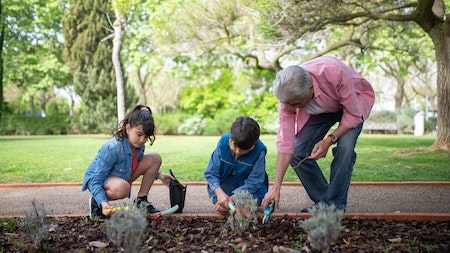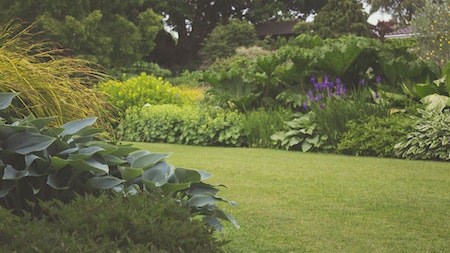It’s September, spring is in the air, and the days are getting longer, so a lot is going on in the garden. With the weather warming up, it’s time to get out into the fresh air and take care of all those gardening tasks you have been putting off since the start of winter.
Pruning
Pruning distributes the plant's stored energy among fewer flower buds so that the remaining ones get more nourishment. The process results in more vigorous growth, better shape, bigger flowers and fruit, and can solve a host of problems.
A general guide:
- Prune back spring flowering shrubs immediately after they have finished blooming.
- Remove the thickest and oldest wood before you move to the younger stems.
- Do not remove more than one-third of a plant's mass in a year to keep it vigorous and looking good.
- Prune away all weak, dead and crossing stems from roses.
- Once you are sure the last of the late winter cold frosts are over, you can cut back any frosted plant material.
- Deadhead violas and pansies, so they will continue to bloom for the next few months.
- Allow Narcissus and Daffodils to die down naturally and go brown, forming next year’s flower bulbs.
Planting
September is the ideal month to plant shrubs and trees. Local garden centres have a wide variety that will bloom in spring and attract birds, butterflies and other beneficial insects to your garden.
- Waterwise flowering plants are hardy, surviving on minimal water and tolerating hot, dry conditions. Good choices include indigenous gazanias, wild garlic, wild irises and vygies.
- Trees that will add colour to your outdoor space include the paperbark acacia, fever tree, blossom tree and forest elder.
- Plant a new curry leaf tree outdoors after the last frosts, or plant it in a well-drained pot with a good potting mix and place it in a sunny area indoors. Feed it weekly with a diluted solution of seaweed fertiliser and trim the leaves as needed. Keep an eye out for mites and scale.
- Clivias bring colour to the shady areas of your garden in September. They are indigenous, waterwise and easy to care for.
- Popular perennials and shrubs to look out for include felicias, carnations, polygalas, argyranthemum and pelargoniums.
- Plant climbers as the soil warm’s up to encourage new roots to grow and establish.
- Herbs like Origanum. coriander, mint, penny royal, rosemary, fennel, basil, dill, chervil, borage mustard, watercress, caraway, anise and summer savoury can be planted now.
- Plant seedlings of tomatoes, lettuce, cabbage, capsicum and brinjals.
Sow
Early vegetable and salad crops can be sowed now:
- Sow seeds of lettuce, tomatoes, peppers, rocket, parsley, cabbage, brinjal, basil, anise and salad burnet in seed trays. Keep them in a warm space indoors or a greenhouse or tunnel, if you have one. Then, when thinning out for planting, use the discarded plants for salads.
- Sow directly in the vegetable garden: carrots, beans, Swiss chard, pumpkin, gem squash, sweet corn, baby marrow, turnips, radish and beetroot.
- Sow new lawn grass seed or plant grass plugs to establish a new lawn quickly.
Pests
As your garden returns to life after the winter cold, some unwelcome visitors will feast on the new tender shoots. Be on the lookout for the following:
- Leaf gall on azaleas
- Thrips on gladioli
- Snails and slugs around newly planted seedlings
- Citrus psylla on lemons
- If you planted impatiens, keep an eye out for impatiens fungus.
Feeding
Feeding the garden during September is essential as plants push out new growth.
- Feed strawberries, raspberries, logan-berries, granadillas and grapes with a general 3.1.5. fertiliser.
- Feeding your lawn will result in improved and lush growth during the year.
- Add an organic slow-release fertiliser to fruit trees and shrubs. First, remove the mulch, feed and replace the mulch.
- Feed fruit trees with a general purpose 3.1.5 fertiliser at the recommended application rates.
General
As the lawn starts growing more quickly, mow with the lawnmower blades on the highest setting. Then, apply an organic lawn fertiliser at the recommended rate.
Water spring flowering shrubs like azaleas and bridal wreaths (deutzia) to ensure a good show.
Stake Inca lilies (alstroemerias) and other perennials that are inclined to fall flat.
Re-pot any container plants that have outgrown their pots and have roots growing out of the drainage holes. Don’t fill the container to the brim; leave space for watering. Water plants sparingly afterwards so that they don’t rot before they start rooting.
Happy gardening this spring season.
Writer : Sarah-Jane Meyer




